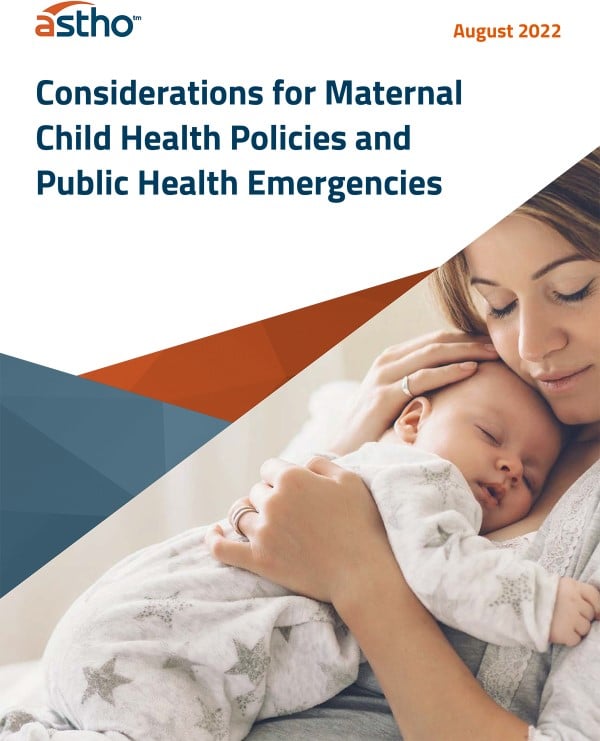Considerations for Maternal Child Health Policies and Public Health Emergencies
August 18, 2022
 Access to care for pregnant people, neonates, and infants can be interrupted during emergencies, including natural disasters such as hurricanes, wildfires, and floods. One category of public health risks following a natural disaster is infectious disease outbreaks following population displacement and changes to the environment resulting from the disaster. Public health emergencies caused by emerging infectious disease, whether precipitated by a natural disaster or resulting from an epidemic or pandemic, can disproportionality impact pregnant people, neonates, and infants as demonstrated by the Zika virus epidemic and COVID-19 pandemic.
Access to care for pregnant people, neonates, and infants can be interrupted during emergencies, including natural disasters such as hurricanes, wildfires, and floods. One category of public health risks following a natural disaster is infectious disease outbreaks following population displacement and changes to the environment resulting from the disaster. Public health emergencies caused by emerging infectious disease, whether precipitated by a natural disaster or resulting from an epidemic or pandemic, can disproportionality impact pregnant people, neonates, and infants as demonstrated by the Zika virus epidemic and COVID-19 pandemic.
There is strong evidence that pregnant people are more likely to experience increased disease severity for infections such as influenza and malaria. Pregnant people may be more susceptible to acquiring infectious disease, such as HIV and malaria. Determining why pregnancy is a risk factor for some infections or more severe disease is an evolving area of medical and public health research. Although greater research is needed to identify why pregnant people’s immunology shifts during pregnancy, evidence indicates that changes to the immune system may increase a person’s susceptibility to certain viruses, bacteria, and parasites. Additionally, infections during a pregnancy may result in negative health outcomes for the developing fetus. These negative outcomes could include pre-term birth, birth defects, or transmission of the infection to the infant.
Although exposure to some of these pathogens can be prevented through proper food handling and vaccines, healthcare providers need to know the existence of an infection—such as Echovirus or HIV—and provide treatment or alter birthing plans to prevent perinatal transmission. Public health officials can also mitigate the impact of disease outbreaks on pregnant people, neonates, and infants through a variety of policies, including policies related to preparing for, responding to, and recovering from a public health emergency.